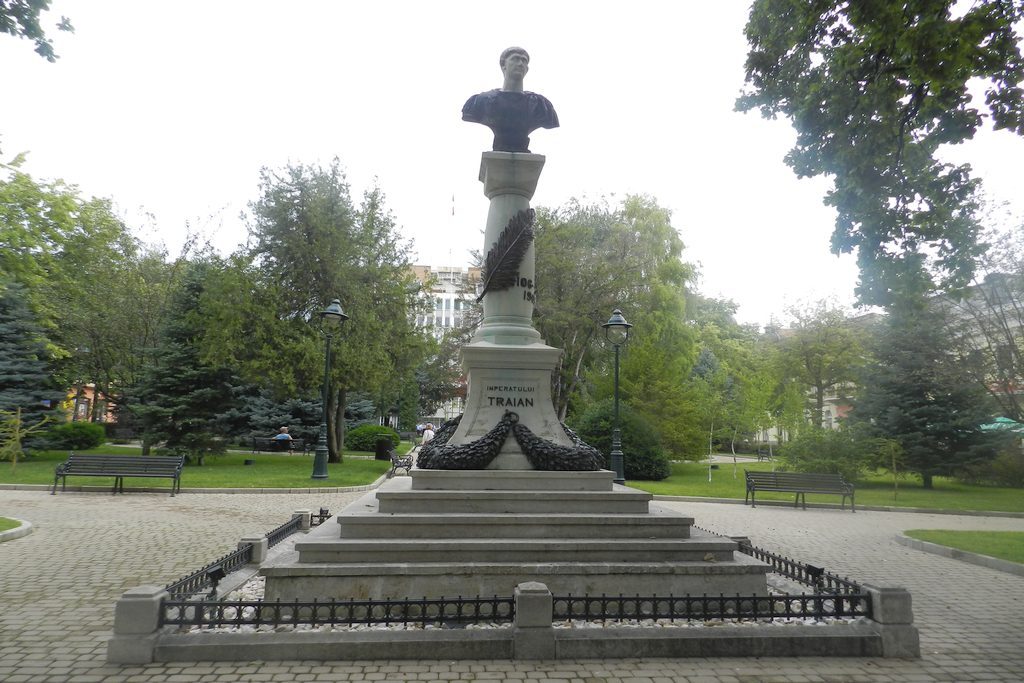

The bust of emperor Traian was inagurated in 1906 is the work of sculptor Franasovici.
Marcus Ulpius Nerva Traianus (b. September 18th 53, d. August 9th 117), Roman emperor (98 – 117) was the second of the so called five good emperors of the Roman Empire and one of its most important. During his reign, the empire reaches its maximum territorial expansion.
As a young man, he advanced in the Roman army hierarchy, fighting in the most dangerous area of the Roman empire, in the Rhin area. He participated in Domitian’s wars against the Germans and he was one of the greatest military leaders of the empire when Domitian was killed in 96. His good name served him during Domitian’s successor’s time, Nerva, who was unpopular in the army and needed someone to obtain the legions’ support. He got it by naming Traian his adoptive son and successor in the fall of 97 (October 27th). Upon Nerva’s death on January 27th 98, Traian succeeded him with no incidents, respected by his subjects.
Thus the first Roman non italian became emperor. The new emperor was received by the people in Rome with great enthusiasm, which he justified through his peaceful reign and with no blood shed, unlike Domitian’s.
Traian remained in history for his battles, In 101, he launched an expidition in the Dacia reign, north of the Danube and forced king Decebal to capitulate after Traian successfully seiged the Sarmizegetusa capital.
Still, shortly after, Decebal caused problems for the Roman Empire trying to have the neighboring kingdomes north of the Danube join him. Traian decides to attack again, his engineers building a huge bridge across the Danube and manage to conquer Dacia in 106, the Dacian capital Sarmizegetusa being destroyed. Decebal killed himself and instead of the ruined capital Traian built a new town, called Colonia Ulpia Traiana Augusta Dacica Sarmizegetusa. He decided to colonize Dacia with Romans and added it as a Roman province.
At the same time, king Nabateei died. He left his kingdome to Traian, while Dacia was being conquered and the empire won in this manner what would become the Arabia Petrea province.
In 113 he embarked for one final campain, dared by Partia’s decision to place a king on Armenia’s throne, a kingdome whose hegemony the two great empires shared since Nero’s reign. Traian got to Armenia first, dethroned the existing king and added the kingdome to the Roman empire. Then he looked south, to Partia, conquering Babylon, Seleucia and finally Ctesiphon, Armenia’s capital, in 116. He continued going south towards the Persian golf, declared Mesopotamia the new province of the empire and complained of being too old to fill the shoes of Alexander the great. In 116, he crossed the Khuzestan mountains in Persia and conquered the great city of Susa. He dethroned king Chrosoes of Partia and put his own puppet, Parthamaspates. The Roman empire will never advance so much towards the east.
Late in 116, while he rested in the Cilicia province and planned a new war against Partia, Traian fell ill. His heath worsened in the spring and summer of 117, until he died August 9th. On his death bed he named Hadrian as his successor.
